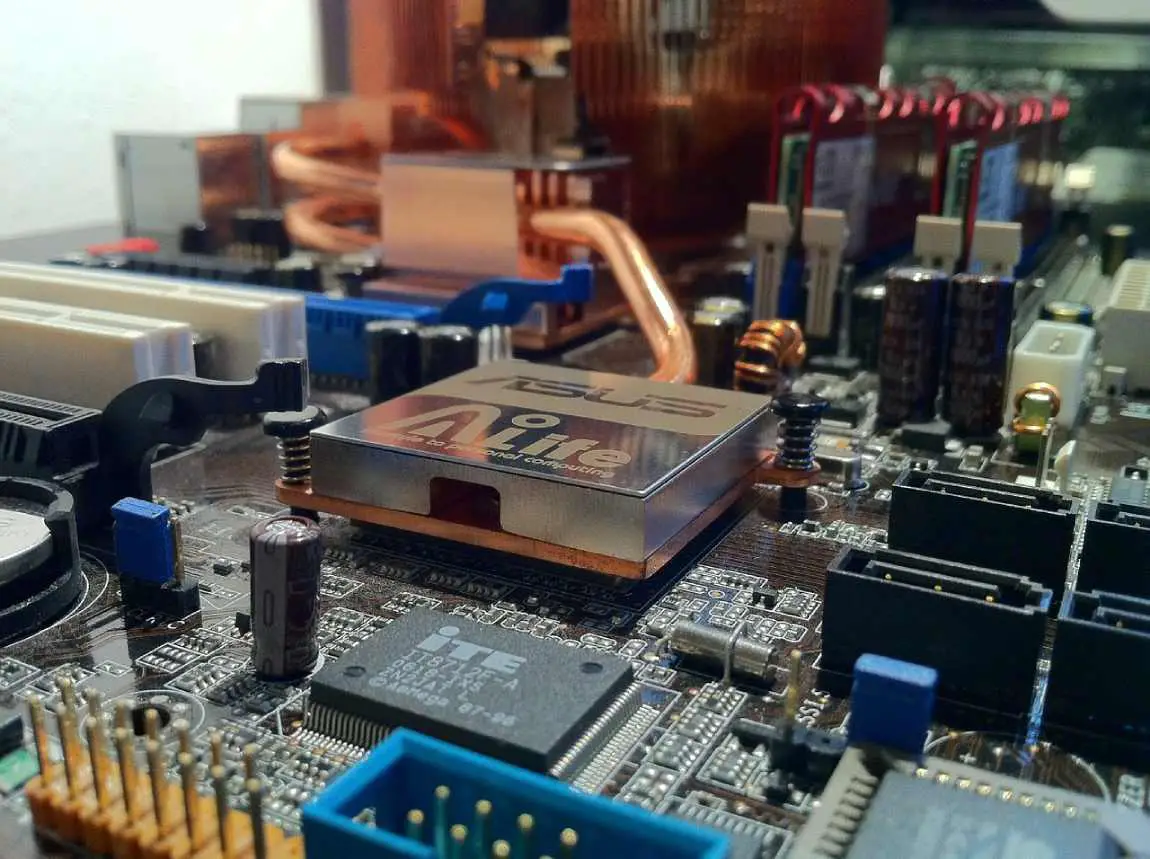If you’re into computers and hardware, you may have heard the term SATA ports a lot.
But many people still don’t know the depth of what they actually are, except for the fact that they have something to do with CPU hardware and stuff.
Well, if you’re one of those people, here’s an extensive guide that covers everything you need to know about SATA ports.
So let’s get started!

What Are SATA Ports?
The word SATA stands for Serial Advanced Technology Attachment.
As the name suggests, a SATA port is a piece of advanced technology, serially aligned, which is an attachment.
In simplified terms, they are connectors in the motherboard of a CPU.
What do they do?
They connect a machine’s motherboard to a hard drive(s).
There can be more than one SATA port on a motherboard that connects to different drives. These ports are interlinked to the motherboard with a hard drive using a SATA data cable.
How To Find SATA Ports In A Computer?
SATA ports have had different presences on motherboards and have advanced through the times.
In older machines, you can find SATA ports present on the motherboard generally in a group of 4 to 8 ports.
These ports are L shaped with 7 pins that conduct the signal to and from the motherboard to and from a hard drive.
SATA ports aren’t universally uniform looking, however. Different motherboards may have different sizes and models of SATA ports.
New machines feature new versions of SATA ports which can be distinguished on a motherboard by colour.
SATA 2 ports are mostly present in the colour of Red or Black.
SATA 3, the latest SATA port generation, is most present in the colour blue.
However, colours do vary on different motherboards. Many motherboards feature SATA 2 ports in the colour blue and vice versa.
The only unique identifier of the SATA port remains their L shaped connector with 7 pins.
Moreover, if you look closely, motherboards clearly label the SATA ports in words just beside them.
SATA Port Versions: SATA 1, SATA 2, and SATA 3
Just like every other computer hardware gets advanced changes with time, SATA ports too have different generations or versions.
Newer motherboards now feature either SATA 1, SATA 2, or SATA 3 ports. SATA 3 being the fastest and the latest generation.
The difference?
Speed.
SATA ports have a crucial responsibility, that is connecting the motherboard and hard drives together and transferring the data within
As a Hard Drive of computer stores almost all the heavy data, either be it the Operating System installed in the PC or a cat video that the user requests to play, SATA ports come in between almost every request in a PC function and transfer data from the hard drive to be processed by the motherboard.
This means, the faster the SATA ports can transfer data in between, the less loading time the user has to wait for.
Which brings us to the main difference between SATA 1, SATA 2, and SATA 3.
SATA 1 ports transfer data at 1.5 gigabits per second (GB/s).
SATA 2 ports transfer data at 3 gigabits per second (GB/s).
And SATA 3 ports transfer data at a fascinating speed of 6 gigabits per second (GB/s)!
Hard Drive Compatibility With SATA Ports
As SATA ports connect to hard drives, different hard drives have different compatibilities for supporting SATA ports.
Most motherboards in this day feature SATA 3 ports which means you don’t have to worry about SATA compatibility and can install a SATA 3 compatible hard drive and enjoy fast operating speed.
However, if your motherboard features SATA 2 ports, only SATA 2 compatible hard drives would work with them.
SATA 2 compatible hard drives can also work with SATA 3 ports but will not work at the fast speed of SATA 3 connectivity (6 GB/s).
Are SATA Ports Labelled On The Motherboard?
Yes.
Because SATA ports vary in colours in different motherboards, all motherboards have a label of SATA ports in words just beside them.
Motherboards boast a mess of many many ports which confuses many beginners working on motherboards. If that’s the same case with you, don’t worry.
Just look closely beside the ports and if it is a SATA port, you’ll see the label of it.
This label would not only identify the version of the SATA port (1,2, or 3), but also its speed.
This means SATA 1 ports will be labelled SATA 1 1.5 GB/s, SATA 2 as SATA 2 3 GB/s, and SATA 3 as SATA 3 6 GB/s.
What Is An ESATA Port?
An eSATA Port stands for External Serial Advanced Technology Attachment.
As the name suggests, it has the same use as SATA but it is of external use.
This means eSATA ports aren’t visible only accessible on the motherboard of a computer which would require you to disassemble a PC but have a port facing outside (just like USB ports) that allows users to connect external hard drives.
Contrary to SATA ports, eSATA ports are I-shaped.
They both also have different compatibilities of cables. SATA cables and eSATA cables are not interchangeable and will only work with their relevant ports.
eSATA ports were mostly popular in older PCs where users needed options to connect external hard drives for more storage space.
What SATA Ports Would A PC Have Nowadays?
Newer PCs in this day would have no eSATA ports and only SATA 3 ports internally that connect to hard drives at fast speed.
For external compatibility, newer and faster ports have made eSATA ports obsolete.
These are either USB ports or Thunderbolt ports.
If you have an external hard drive to connect to a new PC, you would use a USB port or a Thunderbolt port.
Do SSDs Connect To SATA Ports?
Yes.
SSDs and new hard drives both connect to SATA 3 ports found in newer motherboards.



